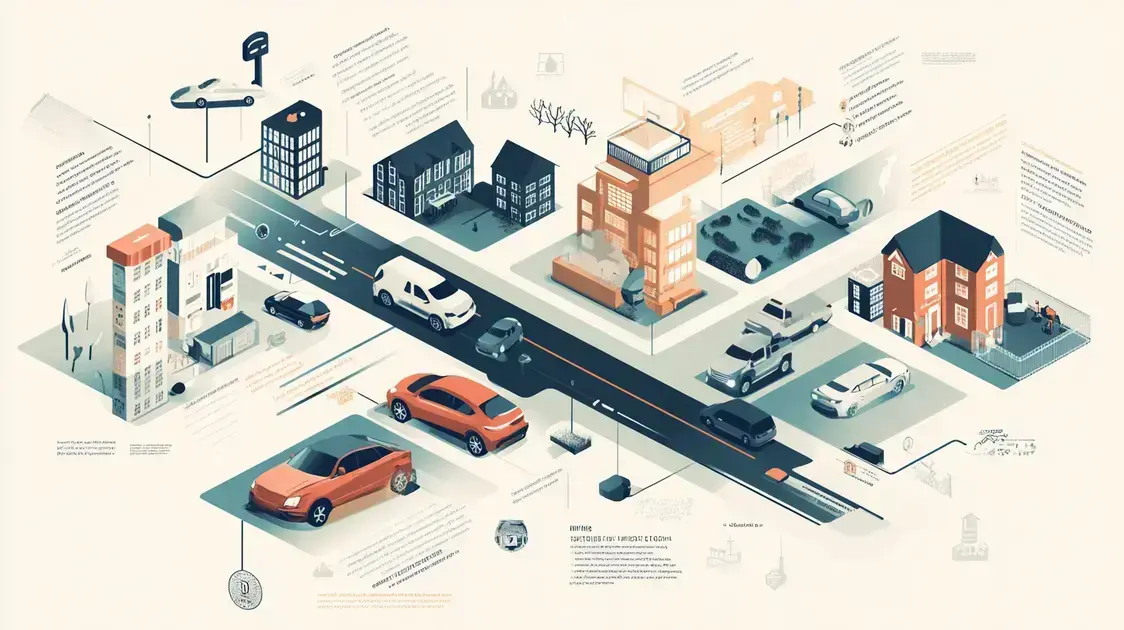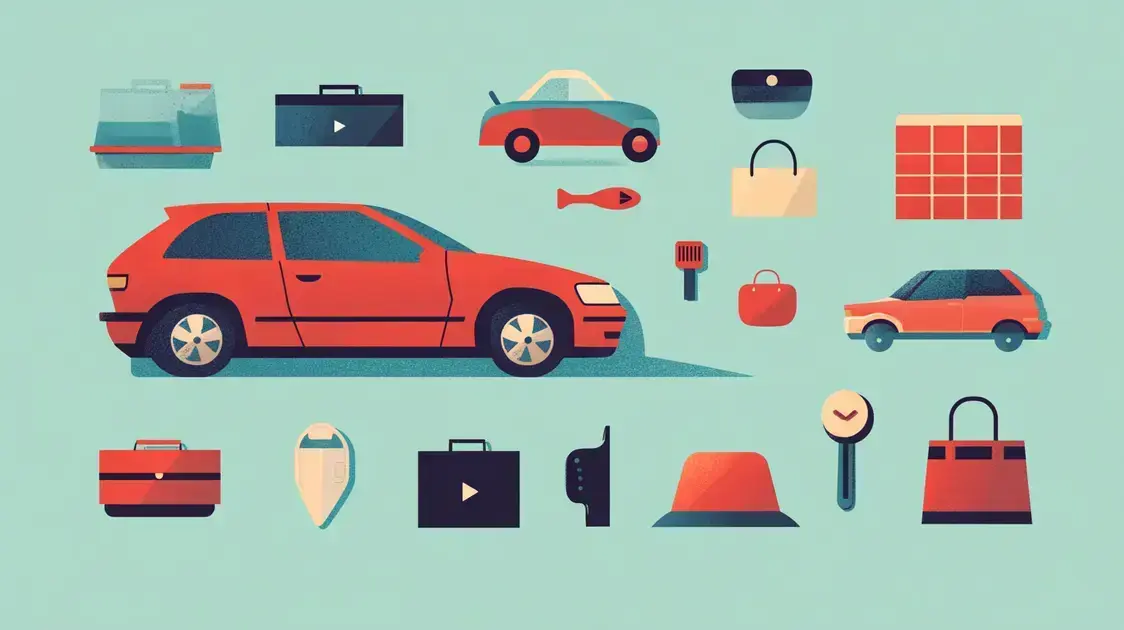Best auto insurance is a must-have for anyone behind the wheel. It not only protects your car but ensures you’re covered financially if things go wrong on the road. Without it, you could be left paying out of pocket for damages or injuries.
Getting the right coverage can feel overwhelming, but knowing the basics can make all the difference. Whether you’re looking for liability, collision, or comprehensive coverage, understanding your options helps you make an informed decision that suits your needs.
Ready to dive deeper into how to choose the best auto insurance policy for your situation? Keep reading to discover tips, tricks, and things you might not know about finding the perfect coverage.
Understanding Auto Insurance Basics
Understanding auto insurance basics is crucial for every driver. Auto insurance provides financial protection against damages to your vehicle and bodily injuries in the event of an accident.
What is Auto Insurance?
Auto insurance is a contract between you and an insurance company. You pay a premium, and in return, the insurer provides coverage for specified risks related to your vehicle. This can include damages from accidents, theft, and even natural disasters.
Types of Coverage
There are different types of auto insurance coverage, including:
- Liability Coverage: This is mandatory in most states. It covers damages to other people’s property and their medical expenses if you are at fault in an accident.
- Collision Coverage: This type helps pay for your vehicle’s repairs after an accident, regardless of who’s at fault.
- Comprehensive Coverage: This protects against damages not involving a collision, like theft or weather-related incidents.
- Personal Injury Protection (PIP): This covers medical expenses for you and your passengers, regardless of who is at fault.
Why Auto Insurance is Important
Having proper auto insurance protects your financial stability. Accidents can lead to significant costs, and without insurance, you may be responsible for those expenses out of pocket.
Key Terms to Know
Familiarizing yourself with key auto insurance terms will help you make informed decisions:
- Premium: The amount you pay for your insurance, typically on a monthly basis.
- Deductible: The amount you must pay out of pocket before your insurance kicks in.
- Exclusion: Specific conditions or circumstances that are not covered by your policy.
Understanding these basics can help you choose the best auto insurance policy tailored to your needs. This knowledge empowers you to make the right decisions and protect yourself on the road.
Factors Influencing Auto Insurance Rates

Several key factors influence auto insurance rates that can impact the amount you pay for your coverage. Understanding these can help you find the best auto insurance policy at a competitive price.
Your Driving Record
Your driving history is one of the most significant factors determining your insurance rates. A clean record with no accidents or traffic violations typically earns you lower premiums. Conversely, a history of speeding tickets or accidents can lead to higher rates.
Location
Where you live plays a huge role in determining your auto insurance costs. If you reside in an area with high crime rates or frequent accidents, your premiums may be higher. Insurance companies assess the risk level of certain locations before setting rates.
Vehicle Type
The type of car you drive affects your insurance rate as well. Expensive vehicles or those that are more likely to be stolen tend to have higher premiums. Additionally, cars with high safety ratings can result in lower rates.
Age and Gender
Younger drivers, especially males, often face higher insurance rates due to their less experienced driving habits. As drivers age and gain more experience, their rates generally decrease.
Credit Score
Many insurance companies use your credit score as a factor in determining your premium. A higher credit score is often associated with more responsible financial behavior and can lead to lower rates.
Coverage and Deductibles
The amount of coverage you choose and your deductible level can impact your premiums. Opting for higher coverage limits generally results in higher rates, while increasing your deductible can lower your premiums.
Claims History
Your claims history also influences your rates. If you’ve made several claims in the past, insurers may consider you a higher risk and adjust your premiums accordingly.
Being aware of these factors can empower you to make better choices when shopping for auto insurance and help you achieve the best auto insurance coverage at the right cost.
Comparing Different Types of Auto Insurance
When it comes to auto insurance, there are several different types of coverage you can choose from. Each type serves a specific purpose and provides various levels of protection.
Liability Insurance
Liability insurance is the most common type of auto insurance. It covers bodily injury and property damage that you may cause to others in an accident. This type of insurance is required in most states.
Collision Insurance
Collision insurance helps pay for damages to your own vehicle after an accident, regardless of who is at fault. If your car is damaged in a collision, this coverage can help you pay for repairs or replacement.
Comprehensive Insurance
Comprehensive insurance protects against damages to your car not caused by collisions. This includes theft, vandalism, natural disasters, and hitting an animal. It provides peace of mind for risks outside of accidents.
Personal Injury Protection (PIP)
Personal Injury Protection (PIP) coverage pays for your medical expenses and those of your passengers, regardless of fault. This coverage can also help with lost wages and other related costs.
Uninsured/Underinsured Motorist Coverage
This type of insurance protects you if you’re in an accident with a driver who doesn’t have insurance or does not have enough insurance to cover your damages. It ensures you are not left without necessary coverage.
Gap Insurance
If your car is totaled, gap insurance covers the difference between what you owe on your loan and what your insurance pays for the car. This is especially useful for those who financed their vehicles.
Classic Car Insurance
For collectors or owners of classic cars, classic car insurance is designed to cover the unique needs of vintage vehicles. This coverage may include special replacements and greater value considerations in case of a loss.
By understanding these types of auto insurance, you can make an informed decision about which coverage best fits your needs, helping you secure the best auto insurance solution.
Tips for Finding the Best Auto Insurance

Finding the best auto insurance can seem overwhelming, but these tips will help you navigate the process more easily.
1. Shop Around
Don’t settle for the first quote you receive. Shop around and get quotes from multiple insurance companies. This will allow you to compare prices and coverage options to find the best deal.
2. Assess Your Coverage Needs
Before you start getting quotes, think about what type of coverage you need. Consider factors like your vehicle’s value, your driving habits, and your budget to determine which coverage options are right for you.
3. Look for Discounts
Many insurance companies offer discounts that can help reduce your premium. Look for discounts for safe driving, multiple policy holders, and good student discounts. Be sure to ask about these when requesting quotes.
4. Read Reviews
Check online reviews and ratings of different auto insurance companies. Reading about other customers’ experiences can give you insight into their customer service and claims process.
5. Consider Local vs. National Insurers
While national insurance companies may offer lower rates, don’t overlook local insurers. Local companies sometimes provide more personalized service and unique discounts that could benefit you.
6. Maintain a Good Credit Score
Your credit score can significantly affect your insurance rates. Maintaining a good credit score can help you secure lower premiums. Make sure to pay bills on time and manage your accounts wisely.
7. Review Your Policy Annually
Once you find a policy you like, remember to review it every year. Your needs may change over time, and insurers frequently update their rates and coverage options. This will ensure you continue to have the best coverage at the best price.
By following these tips, you can confidently find the best auto insurance that meets your needs and budget.
FAQ – Frequently Asked Questions about Auto Insurance
What should I consider when shopping for auto insurance?
When shopping for auto insurance, consider your coverage needs, compare quotes from different providers, and look for available discounts.
How often should I review my auto insurance policy?
You should review your auto insurance policy annually to ensure it still meets your needs and to take advantage of any new discounts.
Does my car color affect my insurance rates?
No, the color of your car does not affect your insurance rates. Insurers consider factors like safety ratings, model, and driving record.
What types of auto insurance coverage are available?
Common types of auto insurance coverage include liability, collision, comprehensive, personal injury protection, and uninsured/underinsured motorist coverage.
Will filing a claim always raise my premium?
Not necessarily. While some claims may impact your rates, many insurers do not raise premiums for claims that are not your fault.
How can I file an auto insurance claim successfully?
To file a claim successfully, assess the situation, gather necessary information, contact your insurer, and follow their claims process.
